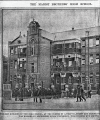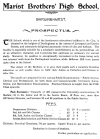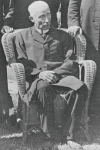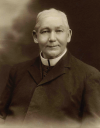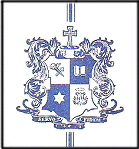
Marist Brothers Darlinghurst
History
THE
LESS-KNOWN BACKGROUND OF THE FOUNDING OF MBHS DARLINGHURST
The
Departure of the Marist Brothers from the St Mary’s Cathedral School
This
topic is a source of continuous fascination for some Brothers. Much ink
has been spilt on this topic including articles written by both
Christian and Marist Brothers. I consider Br Alban Doyle’s account given
in his book on pages 445 - 452 as probably the best. I have reproduced
an article written by a Brother at the time as it gives some interesting
insights. Unfortunately it is not signed. The handwriting and style
points to Br Edwin Farrell, and I think we can be fairly certain it was
him.
The
Marist Brothers opened a primary school at Harrington St in St Patrick’s
parish, Sydney, 8th April of the year 1872. The same year they opened a
novitiate locating it in the same building. The fees from the primary
school being found insufficient to support its teachers and novices, a
High School was opened by the Brothers in the year1 and was located in
the Harrington Street property.
In
the year 1882 as all state aid was withdrawn in from Catholic schools,
the Brothers at the request of Archbishop Vaughan, opened a primary
school in St Mary’s Cathedral parish, and similar schools respectively
in the parish of the Sacred Heart and the district of St Francis. An
administrator only had charge of the St Francis district, consequently
the revenues of it were drawn by the Archbishop.
Enclosed are the conditions agreed upon by Archbishop Vaughan and the
Superiors of the Marist Brothers for the establishment and maintenance
of the schools.
>>>>>>>>>
The
Superior General of the Little Brothers of Mary engages to supply four
Brothers to conduct the St Mary’s R.C. Boys’ School on the following
conditions
1 As salary, the Brothers shall receive the School Fees which shall be
fixed at sixpence (6d) nine pence (9d) and one shilling (1/-) per week
for each child according to classification. Should the school fees not
amount to sixty pounds (£60) per annum for each Brother the Board shall
make up the deficit. Should the school fees exceed their amount the
excess shall be handed over to the Board.
2 To enable the Brothers to meet the expenses of any increase in the
teaching Staff consequent on increased attendance, an allowance shall be
made to them at the rate of sixty pounds (£60) a year for increase of
forty (40) pupils in daily annual attendance.
3 After the first four (4) Brothers it shall be optional to the Superior
General to employ Juniors or Brothers two (2) of the former being
considered equivalent to one of the latter.
4 The Brothers shall be provided with a dwelling house suitable to
Community requirements, free of rates and taxes and shall receive forty
pounds (£40) for each Brother to provide furniture. The Brothers shall
pay to His Grace the most Reverend Roger Bede Vaughan the RC Archbishop
of Sydney or his lawful successor an annual rental of one pound (£1)
5. The usual school expenditure such as furniture, letters, maps,
diagrams and other school requirements, and all rates, taxes, and
repairs shall be at the expense of the Board.
6. The Superior General or his representative to whom he may delegate
this authority – shall have the right of appointing or changing the
Brothers whenever he judges it necessary.
7 The Clergyman signing this agreement or his successor in Office shall
be responsible for the payments to be made under the above conditions.
The Superior General and his representative in the Colony shall be
responsible for whatever concerns the Brothers therein.
The settlement of accounts shall take place on the following dates of
each year, 31st
March, 30th
June, 30th
1
Br Edwin left a blank here, in fact the High School was established in
1875.
September, 31st
December.
8. The Senior Priest of each district shall alone have the right of
granting free admission to pupils.
9. The Brothers shall be paid for a fraction of every forty pupils (as
referred to in clause 2) on average daily attendance per quarter at the
average rate of fees received during that quarter.
The present number of pupils shall be considered as being one hundred
and sixty. (160)
>>>>>>>>>>
These conditions were observed for five years and during this time there
occasionally occurred a surplus derived from the fees paid by the pupils
for these schools and this surplus was paid over to the ecclesiastical
authorities by the Brothers.
In January 1883, the Marist Brothers , with the consent of the
Archbishop changed the “locale” of their Juniorate from St Patrick’s
parish to St Mary’s occupying a stone building within the Cathedral
grounds known as St Mary’s Seminary. There these Juniors remained until
1906, when His Eminence Cardinal Moran, asked for the removal of these
boys stating that he required the building they were occupying for other
purposes. These boys were removed to the Brothers’ College at Hunters
Hill, occupying a portion of the building.2
In August 1887, Cardinal Moran, who had succeeded Archbishop Vaughan in
the See of Sydney, requested that the Brothers’ High School should be
transferred from St Patrick’s to St Mary’s Cathedral parish , and be
located in a portion of a building formally used as a Pro-Cathedral.
The Brothers acceded to his request. This transference led to the
superseding of the conditions agreed upon in connection with the St
Mary’s Cathedral Primary School. In consideration for having a building
for their High School and a residence for the Brothers teaching free of
rent, the Brothers charged themselves solely with the maintenance of the
primary school, receiving as salary only the fees paid by the pupils of
it.
As time went on the conditions agreed upon for the Sacred Heart and St
Francis Schools became less and less strictly observed especially in the
case of the latter school. Owing to it being in a poor locality and
among a shifting population, the fees became very small and the deficit
in the Brothers’ salary proportionally great, till the year the school
was closed the deficit amounted to over £600. The Cathedral authorities
when from year to year they were asked to pay the deficit acknowledged
their indebtedness and actually paid small sums of the money. In the
year.1910 the New South Wales Government resumed the land and hence the
school had to be closed. Though the Government paid the Cathedral
authorities the sum of £24000 as compensation, the deficit of the
Brothers’ salary was completely ignored.
The 1882 conditions were better observed in the case of the Sacred Heart
School, but for some years previously to the Brothers’ severance from it
at the close of the school year 1910 there was always a deficit due to
the pupils fees being not large enough and this deficit was not made up
by Monsignor Carroll the Rector of the parish. So at the close of the
year 1910 the fees of St Mary’s primary school had fallen to the low
figure of 12/6 per Brother per week, the Brothers teaching in the
mentioned schools before were not getting salaries sufficient to keep
them.
A photo attached to an article in the Daily Telegrah reporting on the
opening of the school at Darlinghurst.
About the beginning of 1910 His Eminence the Cardinal notified the
Brothers that he would immediately require the ground upon which their
High School stood for other purposes, hence that the site for the school
and a residence for the Brothers teaching it should have to be obtained
elsewhere. The Brothers found very great difficulty in purchasing a
site. Br Victor states that in a conversation with His Eminence as
regards a site His Eminence suggested the site on which the High School
building now stands, and later in the presence of Br Victor and Denis he
admitted that he had made this suggestion. After considerable difficulty
the present site was secured and a sum of money was paid over to the
agents Messer’s Raine and Horne as part payment of the purchase money.3
After doing this the Brothers learnt that His Eminence did not approve
of the site and consequently they refrained from commencing to build on
it. Wishing to meet His Eminence’s wishes they furthermore tried to
induce the agents to cancel the agreement made between the latter and
the Brothers to purchase the property, even of f ering to forfeit the
sum of money a l r e a d y paid. The agents refused to do this and
informed the Brothers that they would compel them to keep to the
agreement.
This put the Brothers in a dilemma, and led to a stoppage of proceeding
for some time, while the Brothers were devising means to get out of
their difficulties. In the meantime, on account of a glut of building
operations, the cost of building materials and labour rapidly rose about
20%. The Brothers at last resolved to write to His Eminence pointing out
their difficulties and he replied giving them a written permission to
build on the site, adding, to their surprise that he had never been
opposed to it.
Having no money or land the Brothers had now to borrow £11,000 to
complete the purchase of the before mentioned site, and to erect a
building on it for school purposes and also provide a residence for the
Brothers.
3 The present site of course refers to the site that accommodated our
former high school at Darlinghurst. A lot of Brothers are under the
impression we were ejected from the High school at St Mary’s. This was
not the case. We were ejected from the primary school. Through
circumstances described in this article this occurred during the period
when the High School had already vacated the Cathedral site. At this
point the high school classes were dispersed as Br Alban writes in his
book, in various locations: St Patrick’s, the Stoneleigh property aided
by a play shed costing about $400, two (classes) left at St Mary’s, and
some in the Presbyterian Hall in Palmer Street, the Presbyterian
authorities generously making it available at a nominal rent of $2 per
week. (See pages 447 – 8). The school being constructed at Darlinghurst
was meant to be called St Mary’s Cathedral High School. Why this did not
happen will become clear later in this article. The Christian Brothers
School at the St Mary’s site remained a primary school till 1915. After
1916 there was an Intermediate High school at the Cathedral. It did not
become a full high school till 1946.
An early prospectus of Marist Brothers High School Daringhurst.
The Brother Provincial4
and his council as a consequence, now sent a communication to His
Eminence the Cardinal and one to Monsignor Carroll of the Sacred Heart
parish, pointing out that a new condition of theirs in connection with
the two schools had arisen and suggesting that the 1882 conditions
should be reverted to. As the cost of living had risen perhaps between
30% and 40% since 1882 it is evident that the Brothers were not too
exacting in the suggested conditions.
Monsignor Carroll did not acknowledge the communication, but His
Eminence wrote to Br Paul, Provincial, proposing that the suggested
conditions should be tried in connection with the Cathedral School for
twelve months. The Provincial was in New Zealand when this communication
arrived at St Joseph’s College for him and Br Victor5,
Director of the College, apprised His Eminence of this and forwarded the
communication to the Provincial. About three days after the receipt of
His Eminence’s communication, hence some time before such communication
could reach New Zealand, Br Victor received a letter from His Eminence
informing him that the Brothers’ services in connection with the primary
school at St Mary’s would be dispensed with. A few days after this it
became public property that the Irish Christian Brothers had taken
charge of St Mary’s primary school at the request of His Eminence, and
that Monsignor Carroll proposed obtaining lay teachers for the Sacred
Heart School. During the last few months of the Brothers stay at St
Mary’s Monsignor O’Haran several times hinted to the Brothers that he
would have them removed and replaced by the Irish Christian Brothers.
Br Paul of the Cross presumably some years after he was Provincial.
When it became public that the Brothers were being dismissed from St
Mary’s some individual unknown to the Brothers and acting on his own
responsibility wrote to the Daily Telegraph complaining of the treatment
dealt out to the Brothers by the cathedral authorities. There is
internal evidence of this in the account of the interview between
Monsignor O’Haran and a Daily Telegraph reporter. Without publishing
this letter a Daily Telegraph reporter interviewed Monsignor O’Haran, in
regards to the Brothers’ dismissal and Monsignor charged the Brothers
with commercialism in connection with it.
An account of the interview was published in the columns of the next
issue of the Daily Telegraph, and on the afternoon of that day Br Victor
was rung up from the office of the Daily Telegraph and asked whether he
desired to make a statement in connection with the matter. After
consultation of the principal Brothers of the house he informed the
Daily Telegraph authorities that he would make no statements. Being
informed that there were several letters in the Brothers’ favour lying
at the office awaiting publication Br Victor expressed his disapproval
of their publication. The same day Br Victor assembled the Brothers of
the house, by far the largest we have in the Commonwealth and directed
them to preserve silence under the accusation and not to communicate
the matter to any extern for the purpose of publication.
Stoneleigh, the Brothers' residence used to accommodate some of the St
Mary's High School clsses in 1910. This photo is undated probably taken
long after these events
Two (three?) days after the publication of the before-mentioned
interview, there appeared in the columns of the Daily Telegraph an
account of an interview by the same reporter, with a Marist Brother. The
local superiors of the Marist Brothers made several unsuccessful
efforts to obtain the name of this Marist Brother but signally failed.
Several suspected Brothers denied having been interviewed when
questioned by the Brother Provincial. On the Provincial’s return to
Sydney, which took place after several letters had appeared, he forbade
the Brothers to furnish any information to externs for publication. The
Brothers are under the impression that the person interviewed was with a
Marist Brother. Even were he such, he acted against the expressed with
and command of his Superior by declaring matter for publication.
4 The provincial at the time was Br Paul of the Cross, Clarke, a New
Zealander recruited by Br Ludovic.
5 Br Victor Ludeke
This photo was taken by Br Alban Doyle in October 1963.It shows the
Palmer Street Presbyterian Hall used by Marist Brothers High School
students from September 1910 to April 1911 when the High School had to
vacate the St Mary’s grounds. The details of this are described in this
article by Br Edwin Farrell.
This alleged Brother stated that the Cathedral authorities wished to get
rid of the Marist Brothers because the latter were not an Irish order. A
series of anonymous letters all in favour of the Brothers now appeared
in successive issues of the Daily Telegraph. The local superiors of the
Marist Brothers requested the editor several times to discontinue
publication of these letters, but without success. After a number of
letters had appeared His Eminence wrote to the Provincial threatening to
take strong measures unless the publication of the letters should be
discontinued before the following Sunday.
>>>>>>>>>>
St Mary’s Cathedral
Sydney
30th January 1911
My dear Br Paul
My attention has been called to a voluminous correspondence regarding
your Brothers’ departure from St Mary’s parochial school, which has been
appearing in the Daily Telegraph for the past fortnight some of the
letters being sponsored by Marist Brothers. I have learnt today that
moreover some parties have been using their endeavours to prevent the
boys from attending at St Mary’s School. I will have to take very strong
measures to put an end to this scandal unless this annoyance ceases
before next Sunday. I fear that the whole exhibition speaks very badly
for the education imparted by the Brothers.
Yours faithfully
Patrick Cardinal Moran
Archbishop of Sydney
>>>>>>>>>>>>>
As the Br Provincial had previously done all he could to secure
discontinuances he made no fresh effort, but replied to His Eminence
expressing his regrets and disapproval of the public correspondence and
asking His Eminence to suggest some means of securing discontinuance.
His Eminence did not reply to this letter.
Here is the reply that the Br Provincial sent to His Eminence on the
following day.
>>>>>>>>>
St Joseph’s College
31st
January
To His Eminence P F Moran
My Lord Cardinal
Your Eminence’s letter to just to hand
I deeply regret the uncalled for and most damaging correspondence that
has been carried out in the Daily Telegraph and I can assure your
Eminence that I have taken every possible means to stop it but without
avail.
I personally forbade the Brothers to write or to furnish anyone with
information for publication.
We refused from the beginning to make any statement; we have written to
the Editors and called on them personally to ask them not to publish
those letters
The editors have refused to reveal any names or give any clue as to
those who gave the information.
We have forbidden the use of our schools for meetings in reference to
the matter.
I early took precaution to forbid the Brothers to interfere with the
children of St Mary’s parish in regard to their future movements.
We fail to see what further we could do, unless Your Eminence has some
suggestions to make.
I have the honour to be Your Eminence’s humble servant
Br Paul
>>>>>>>>>>>>
As a matter of fact the publication of letters discontinued after
receipt of His Eminence’s communication, the Brothers do not know why.
This synchronising may have given colour to the view that the Brothers
were responsible for the correspondence.
On Sunday, the limit day appointed by His Eminence, the various Catholic
societies of men belonging to the Jesuit parish of North Sydney took
part in a communion breakfast at which, among other toasts, that of the
Marist Brothers was proposed. Several speakers eulogised their work and
one speaker made some reference the troubled relations between His
Eminence and the Brothers. As none of the Brothers were present what he
said is not exactly known to them. On the Tuesday following some unknown
gentleman was interviewed by a Daily Telegraph reporter and then the
publicity recommenced. A day or two after His Eminence was interviewed
on the matter and he informed the reporter that the Brothers were
dismissed for incompetency and that all that had been written in their
favour in the columns of the Daily Telegraph were false. This is the
substance of his remarks. These statements led to further publication of
letters in two succeeding days, the last one appearing in a Saturday
issue of the Daily Telegraph. On the following Sunday Br Victor, the Br
Provincial’s representative, the latter being away, sent a letter to the
editor of the Daily Telegraph publicly disclaiming any connection with
the letter that had appeared in their favour during the whole
controversy.
An undated but very early photo of the back of the High School and also
the Brothers' residence at Darlinghurst.
The editor promised to insert the letter in the following day’s paper –
Monday. The letter did not appear on the Monday, why, the Brothers could
not ascertain though having made inquiry, but it did appear in the
Tuesday‘s issue in a slightly mutilated form. (Here is a copy of the
letter with the words omitted by a red circular line.)6
6 These words have been underlined.
>>>>>>>>>
To the Editor of the Daily Telegraph
Dear Sir
On behalf of the Marist Brothers, I, in the absence of the Rev Br.
Provincial, desire to make a public disclaimer of their connection with
the correspondence that has recently appeared in your paper on the above
mentioned matter.
Realising that, as educators of youth, they are bound to inculcate
respect for authority and submission to it, they have been exceedingly
pained by the tenor of the correspondence; at no time had it their
sanction or approval; as a matter of fact, they are entirely ignorant as
to the identity of the correspondents.
As you are aware I declined to be interviewed as to the above mentioned
matter,
and furthermore, several requests were made to you by the Brothers to
discontinue the publication of the correspondence.
By their public disclaimer, they desire to remove any wrong impression
that may exit as to their approval in any way, of the correspondence or
identification with the writers of the letters
Br Victor
>>>>>>>>>>>>>
On the same day as this letter was published a letter directed to Br
Provincial was sent by His Eminence. The letter was forwarded on to the
Provincial who was then South Australia. In this letter His Eminence
stated that from information he had received things were not going too
satisfactorily at our High School at Darlinghurst, and hence he withdrew
all patronage, sanction and approval of it and that consequently the
school was not to retain the title St Mary’s High School. The Provincial
replied asking His Eminence to be good enough to state definitely what
there was unsatisfactory, in order that he, the Provincial might remedy
it. No answer to this was received.
(Copies of the two letters are produced below: These were not included
in Br Edwin’s article)
>>>>>>>>>>>>
St Mary’s Cathedral
Sydney14th Feb 1911
My dear Br Provincial,
From the information which I have received, I fear that matters at your
High School, Darlinghurst, are not proceeding in a satisfactory manner.
I deem it a duty to withdraw from the said High School all patronage,
sanction and approval, I may have hitherto extended to it. Of course it
can no longer assume the title of St Mary’s High School
Your faithful servant
Patrick Fr. Moran
Archbishop of Sydney
The Br Provincial replied as follows;
My Lord Cardinal
Your Eminence’s letter of the 14th
instant just to hand.
I regret to hear from your Eminence that matters are not proceeding to
your Eminence’s satisfaction at the High School and that you deem it
necessary to withdraw your patronage as graciously given in the past.
Would you Eminence kindly point out what is unsatisfactory in the High
School so that a remedy may be applied.
Your Eminence’s obedient servant
Br Paul, Provincial
>>>>>>>>>>>>>>>>>>>
His Eminence did not reply to this note.
The Marist Brothers began teaching in Australia 1872 (39 years ago).
After 39 years labour in Australia, New Zealand and the Pacific Islands
the Brothers had accumulated no money, they have had to borrow the money
to build their High School by mortgaging their Hunters Hill property.
They state that during these 39 years, with the exception of two or
three insignificant sums of money they have supported themselves by
their own labours, without asking subscriptions from the Catholic
public. The lack of money has not been caused by extravagant living, for
the members of the Brotherhood have always been distinguished and
unostentatious life. At the present time the cost of living in the
Commonwealth is higher than it ever was before but despite this the
remarkably moderate fees charged in their colleges and High School have
not been raised. They have now a number of men among them that have
grown old in the work if the Institute and that must now be supported by
it.
They derive scarcely any revenue from their Juniors and Novices, hence
the cost of supporting these is to be borne by the Institute.
Furthermore they have now to provide for a heavy additional expenditure
for they must give all or nearly all their members a University
education. This means these members shall have to spend a considerable
amount of time qualifying themselves for their work, a time during
which, that can bring in no revenues and that have to pay heavy fees to
Universities.
The Brothers themselves are much disturbed in mind by the treatment they
have received from the Cathedral authorities, they are especially
impressed by the fact that Monsignor O’Haran has never shown sympathy
with their work, but, on the contrary well –marked hostility. They are
of opinion that this treatment is a direct discouragement of vocations
to the religious Teaching Brotherhoods. A criterion of the confidence
that the Catholic public has in the disinterestedness and competence of
the Marist Brothers as teachers is that larger numbers than ever are now
attending their schools. The High School, though at present working
under very adverse conditions, the students being accommodated in two
rather widely separated localities one of these being very unsuitable
for a school of such class, has a record number of students. St
Patrick’s and North Sydney School have a remarkable increase in their
numbers, and the numbers at St Benedict’s school have also increased. St
Mary’s High school within the last ten years has sent ? to St Patrick’s
Ecclesiastical College at Manly.
Br Sebastian’s case
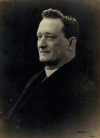
At the time Br Sebastian resided at the Brother’s residence within the
Cathedral grounds and had done very efficient teaching at the Brother’s
High School. Though no attempt was made to prove the charge of
Modernism Br Provincial was desirous of conforming to His Eminence’s
wishes. But not clearly understanding what His Eminence meant by another
sphere of labour he deputed Br Victor and Br Denis to interview His
Eminence for the purpose of getting an explanation. His Eminence on
hearing the nature of their visit to him simply repeated the threat of
interdictum and abruptly left the room. At very great inconvenience the
Br Provincial then removed Br Sebastian to Mittagong a place 78 miles
distant from Sydney and where Br Sebastian could render the Institute no
service as a teacher.7
It is worthy of remark that St Mary’s school is the only one in the
Archdiocese from which Brothers have been removed by request of the
Ecclesiastical authorities...
Br Edwird Farrell. Br Edwin was the first Australian Marist Brother to
complete his novitiate and die as a Brother. He had a keen sense of
history. He wrote a history of the Australian Province. He also kept
extensive diaries which we still hold. He is almost certainly the author
of this article.
This is the completion of Br Edwin’s article. We publish below two of
the famous letters to the editor in the Telegraph to give our readers a
flavour of them. The first is very much against the protesters the
second signed “Cerise and Blue” is appropriately pro Marist.
The Marist Brothers’ trouble
>>>>>>>>>>>>>
Sir
We must thank “Tipperary Man from the Devil’s Bit” for his fearless and
able letter in English, Latin and French, all of which is material in
the Tipperary stone- thrower’s hands against the old man in the tower.
The letter proves that its author is learned, able to quote, and Heaven
know, perhaps to speak three different languages. I beg the public to
take note of that; some may be able to find out where the Devil’s Bit
is, and what notorious person has left it during the last generation. I
am nearly tempted to place myself at his disposition to converse with
him in French, in Latin, and in a couple more of languages; but I rather
abstain. You never know what may turn up. His knowledge of history is
very great, too, for he can tell us that Colonel M’Mahon once said, in
the Crimean war: “J’y suis. J’y reste.” This must take an impression on
the Cardinal and he may repent and call his late school staff back. We
owe special thanks also to the same “Devil’s Bit of a Catholic” for
having reminded us that a bishop, when making personal changes on his
premises, does not act under the impulse of papal infallibility. Thanks
ever so much for the enlightenment. It is exactly what Lily O’Brien
learns in her Catechism. The truth must be told, and he has told us an
old truth. Best of all, I like the title of his letter: “Quem Deus vult
perdere, prius dementat” in English, “When a fish rots, it begins on the
head.” This quotation shows erudition. It shows brain power, In fact, it
shows and proves to a conclusion that “Australian Eviction,” “Fairplay,”
“Ex-Student,” “Maristonian,””Another Observer,” but, above all,
Tippererary man, are in a typhoon, passing over the sea without changing
the policy of the old man in the tower. Whirlwinds are grand things. I
once saw one; it went up, and it went down again.
In finishing my letter, I wish all my friends a happy New Year, good
health at every change of moon, an increasing knowledge of what is their
own business, and a profound understanding of the Gospel’s saying “Be
subject to your bishops;” “Be not wise in your own council.”
Yours etc Observer
>>>>>>>>>>>>>>>>>>>>>
7 Br Sebastian Hayden spent most of the rest of his life teaching at
Kilmore and Bendigo. He is a very interesting man. .He was the original
Brother requested by Br Andrew to write a history of the Marist Brothers
in Australia. I suspect a lot of the documents we now hold in our
archives were collected by him, and later used by Br Alban in his book.
He carried on a huge correspondence with many Brothers all over
Australia. Fortunately most of his letters have been preserved. They
give us an interesting insight into Marist life in the 1920s, 30s, and
40s.
January 27
>>>>>>>>>>>
Sir,
Allow me space to reply to the seven articles of “Observer”.
1. Observer remarks: The thing is done and will not be undone. Certainly
the thing is done, but surely it can be undone, and if there is such a
thing as justice on one side of a feeling of good brotherhood on the
other, it shall be undone.
2. “Observor” goes on to say “It was extremely bad taste to write while
the Bishops were in conference”. I think it showed extremely good
judgement , for the Bishops were here to discuss matters appertaining to
our schools , and within a stone’s throw from their place of meeting
there was the vacated house and school of the Marist Brothers, a silent
but yet a powerful voice calling on the assembly for justice. “Observer
“remarks that the ex-students of the Marists came out against their
Bishop. I might remind Observer that their Bishop’s name was not
mentioned in the discussion, and I might add that, did it depend on
their Bishop alone the Marist Brothers would still be at St Mary’s. We,
the ex-students, know too well the esteem the Cardinal has for the
Marists. Time after time, both in public and private he has shown this.
3 The letter continues “we do not know the other side of the question.”
No, but if we did could we get the correspondence between the
authorities and Dr. Murphy of Newton, and between the same and the
Christian Brothers, we would have the other side then.
5. Again he says; “we do not know the motives of our Bishop.” Did
“Observer” read the interview between your reporter and Right Rev.
Monsignor O’Haran? If he did surely he must know the reason why the
Marists were put out of St Mary’s. The reason given was because they
were not religious but commercial agents.
6. Is it not right the Christian Brothers should have a city school?
Certainly. But is it right, Observer to take that school from the
Marists? Is it right for the Christian Brothers to close Newtown school
simply for the reason of ousting the Marists from St Mary’s? Will the
Marists take Newtown? Let “Observer” answer these questions.
7 Regarding the correspondence, let “Observer” prove his charge,
In conclusion just a word to my old masters. Never fear: this storm will
pass away. Remember you have the sympathy of thousands of Australian
Catholics. Remember your High School opened on Monday with 150 present.
This is the reply of the Catholics, and when you leave the friendly
shelter of the hall on Palmer Street to take possession of the
magnificent school you are building on Darlinghurst Heights do not
forget those who stood by you in the hour of need.
Yours etc
Cerise and Blue
January 27
>>>>>>>>>>>>>
(N.B Cerise and Blue’s fourth point seems to have been lost in the dust
of history Ed8.)
8 Ed here is the then editor of the Daily Telegraph., not to be confused
with the editor of this worthy journal.
MBHS Darlinghurst Old Boys’ Union acknowledges this extract to be
courtesy of “Marist Seasons Summer”.
